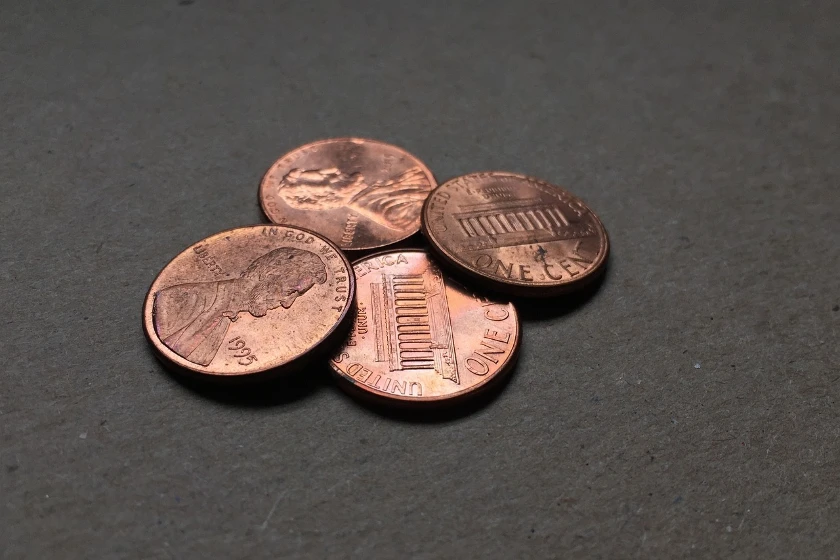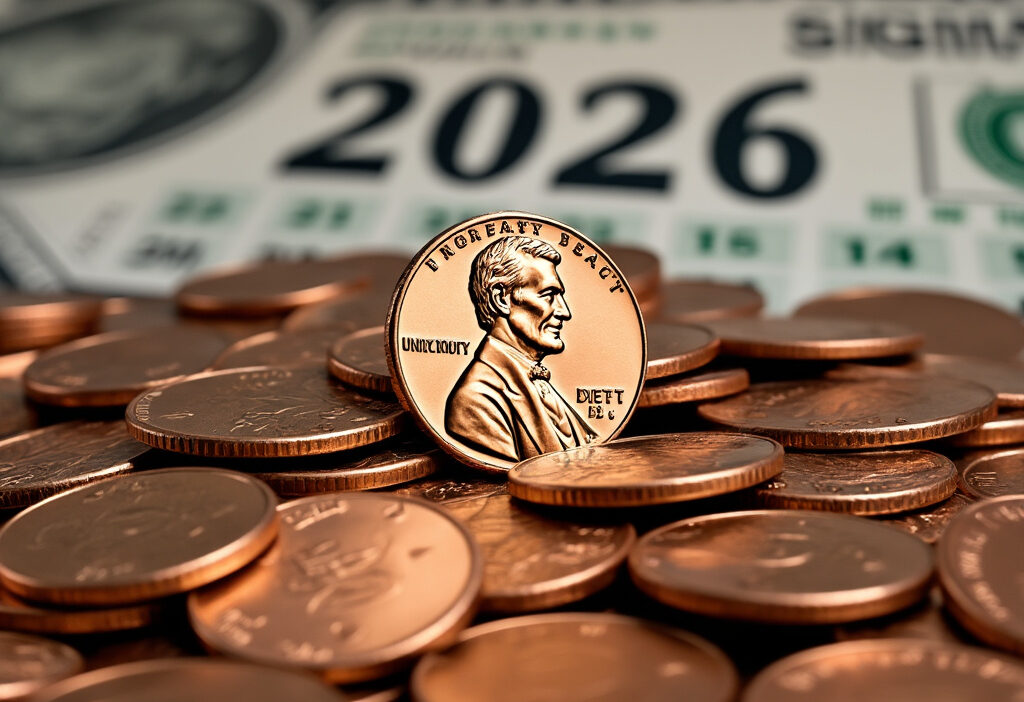The End of the Penny Era A Shift in US Currency Policy
The U.S. Treasury’s announcement to halt penny production marks a pivotal moment in American currency history. This decision, driven by financial impracticality, ends over a century of the one-cent coin’s circulation. This article delves into the reasons behind this move, its economic implications, and how businesses and consumers will adapt to a penny-less economy.
Historical Significance of the Penny
The U.S. Treasury’s recent announcement to halt penny production marks a pivotal shift in monetary policy, signaling the end of an era for the one-cent coin. For decades, the penny has been a fixture in American commerce, but its declining practicality and rising production costs have rendered it unsustainable. The decision reflects a broader reevaluation of currency efficiency, as modern transactions increasingly favor digital payments and rounded cash exchanges.
The Treasury’s move underscores the penny’s diminishing role in an economy where inflation has eroded its purchasing power. Once essential for small transactions, the coin now struggles to justify its existence amid logistical and financial burdens. The discontinuation aligns with global trends, as countries like Canada and Australia have already phased out their lowest-denomination coins.
While the penny’s cultural symbolism remains, its economic utility has faded. The Treasury’s pivot acknowledges this reality, prioritizing fiscal responsibility over nostalgia. This step paves the way for a streamlined currency system, reducing waste and inefficiency—a theme explored further in the next chapter’s analysis of production costs.
The Financial Burden of Penny Production
The financial burden of penny production has long been a contentious issue, with the cost of minting each coin far exceeding its face value. Since 1982, pennies have been made primarily of zinc (97.5%) with a thin copper plating (2.5%), yet even this cheaper composition hasn’t kept pace with inflation and rising metal costs. In recent years, the U.S. Mint has spent 3.7 cents to produce each penny, resulting in a staggering loss of over $70 million annually, as reported in fiscal years 2019–2022.
This inefficiency stems from multiple factors:
- Material costs: Zinc prices have surged, accounting for nearly 80% of the penny’s production expense.
- Manufacturing overhead: Striking and distributing pennies consumes resources disproportionate to their utility.
- Declining usage: With fewer cash transactions, pennies often sit idle or are discarded, amplifying the waste.
The Treasury’s decision reflects a pragmatic shift—diverting funds from a symbol of the past toward modernizing currency systems. Critics argue eliminating pennies disrupts pricing psychology, but the data underscores an unsustainable model. As production costs continue to outstrip value, the penny’s fate hinges on fiscal realism, not nostalgia.
The Decision-Making Process
The decision to discontinue penny production emerged after years of debate, with President Donald Trump playing a pivotal role in pushing for the policy change. In 2018, Trump directed the Treasury to explore cost-saving measures, citing the penny’s inefficiency. Treasury Secretary Steven Mnuchin later confirmed the move, stating, “Eliminating the penny is a commonsense step toward modernizing our currency.”
Bipartisan support accelerated the process, with lawmakers from both parties acknowledging the financial burden highlighted in previous analyses. Key figures, including Senator John McCain and Representative Ron Paul, had long advocated for its elimination. Internal Treasury memos revealed that officials weighed public sentiment against economic realities, ultimately concluding that rounding cash transactions—a practice already successful in countries like Canada—would minimize disruption.
Stakeholders, including retail associations and banking groups, were consulted to ensure a smooth transition. The final decision, announced in 2020, marked the end of an era but aligned with broader efforts to streamline U.S. currency production.
Economic Implications for Businesses
The discontinuation of penny production will force businesses to adapt to rounding practices in cash transactions, primarily affecting small-value purchases. The Treasury Department has proposed rounding to the nearest five cents, a model already implemented in countries like Canada, Australia, and New Zealand with minimal disruption. Studies from these nations show that businesses adjusted smoothly, with no significant price inflation or consumer backlash.
For U.S. retailers, the shift will require updated point-of-sale systems and employee training. Cash transactions ending in 1-2 cents will round down, while 3-4 cents round up, maintaining fairness. Digital payments remain unaffected, reinforcing the trend toward cashless transactions. Small businesses, however, may face short-term challenges in recalibrating pricing strategies.
The economic impact is expected to be neutral long-term, as seen internationally. Canada’s 2013 penny elimination saved taxpayers millions annually without harming commerce. The U.S. could see similar efficiency gains, reducing production and handling costs. Critics argue rounding may favor businesses over consumers, but international data suggests such concerns are overstated. The transition, while logistical, aligns with broader currency modernization efforts.
Public Reaction and Industry Response
The Treasury’s announcement to halt penny production sparked mixed reactions. Fiscal conservatives praised the move, citing long-overdue cost savings, while efficiency advocates highlighted reduced transaction friction. However, small businesses expressed concerns over cash rounding during the transition, fearing customer disputes. Industries reliant on cash transactions, like laundromats and vending operators, pushed for clear federal rounding guidelines to avoid confusion. Meanwhile, public sentiment remained divided—nostalgia clashed with practicality, as many acknowledged the penny’s dwindling utility. The debate mirrors broader questions about the role of low-denomination coins in a digital economy.
The Future of Other Low-Denomination Coins
The discontinuation of the penny raises questions about the future of other low-denomination coins, particularly the nickel, which also suffers from production costs exceeding its face value. As of 2023, producing a nickel costs approximately 8.5 cents, making it another candidate for potential phase-out. However, unlike the penny, the nickel’s higher face value and broader transactional utility complicate the decision.
Key factors influencing the nickel’s fate include:
- Transaction efficiency: While pennies are often discarded, nickels still play a role in cash transactions, especially in vending machines and small retail exchanges.
- Metal composition: The nickel’s higher metal content (75% copper, 25% nickel) makes it more expensive, but alternative materials could reduce costs without eliminating the coin.
- Public sentiment: Unlike pennies, nickels lack widespread criticism, meaning political and social pushback against discontinuation may be weaker.
The Treasury has not yet signaled plans to retire the nickel, but rising production costs and declining cash usage may force reconsideration. If discontinued, rounding rules similar to those for pennies would likely apply, though the impact on pricing could be more pronounced. The debate hinges on whether retaining the nickel justifies its inefficiency—or if its eventual phase-out is inevitable.
Legal Tender and Circulation Policies
The Treasury’s decision to halt penny production does not invalidate existing pennies. They will remain legal tender indefinitely, meaning businesses must accept them unless explicitly stated otherwise. However, the Federal Reserve will gradually withdraw pennies from circulation through banking channels, reducing their presence over time. The Treasury encourages rounding cash transactions to the nearest nickel, though electronic payments will still reflect exact amounts. No formal deadline for penny removal exists, but their practical use will diminish as supply dwindles. This phased approach ensures a smooth transition without abrupt disruptions to commerce.
Environmental and Material Considerations
The discontinuation of penny production carries significant environmental and material benefits. Zinc and copper, the primary metals in pennies, require extensive mining, which contributes to habitat destruction, water pollution, and high energy consumption. Eliminating penny production reduces demand for these metals, easing pressure on ecosystems.
Additionally, the energy-intensive minting process—melting, stamping, and transporting billions of coins annually—generates substantial carbon emissions. Halting production cuts this footprint, aligning with broader sustainability goals.
Waste reduction is another key factor. Pennies often end up discarded or hoarded, wasting resources. By phasing them out, the U.S. minimizes metal waste and streamlines currency efficiency. Other countries, like Canada, saw similar benefits after eliminating low-denomination coins, reinforcing the environmental logic behind this shift.
This decision not only modernizes currency but also reflects a commitment to resource conservation, setting a precedent for future policy changes.
Comparative Analysis with Other Countries
The U.S. decision to phase out the penny follows a global trend. Canada eliminated its penny in 2012, citing production costs exceeding face value, while Australia and New Zealand retired their one-cent coins decades ago. These nations adapted smoothly, rounding cash transactions to the nearest five cents without economic disruption. Key lessons include:
- Public education was critical—clear communication minimized confusion during transitions.
- Business adaptation relied on standardized rounding rules, avoiding price inflation concerns.
- Digital payment growth reduced reliance on physical coins, easing the shift.
The U.S. can leverage these insights, particularly in addressing skepticism from traditionalists. Unlike Canada’s zinc-based penny, the U.S. version’s copper-plated composition adds complexity, but precedents show logistical hurdles are surmountable. The move aligns with broader efficiency goals, mirroring successes abroad.
The Penny in American Memory
The Treasury’s recent announcement to halt penny production marks a pivotal moment in U.S. monetary history. While the move aligns with global trends of phasing out low-value coins, as explored in the previous chapter, its domestic implications are profound. The decision reflects not just economic pragmatism—addressing rising production costs and inflation—but also a symbolic shift in how Americans perceive currency.
For generations, the penny has been woven into the fabric of daily life, from childhood piggy banks to the phrase “a penny for your thoughts.” Its discontinuation raises questions about how such a small yet iconic piece of currency will be remembered. Collectors and historians are already anticipating a surge in commemorative efforts, from limited-edition mintings to museum exhibits. The penny’s retirement may even spark nostalgia-driven markets, where rare or historic pennies gain value as artifacts of a bygone era.
Yet, the penny’s legacy extends beyond sentimentality. It represents an era of tangible exchange, now fading in a cashless world. As the U.S. moves forward, the penny will likely become a cultural touchstone—a reminder of simpler times, preserved in folklore, idioms, and perhaps even digital memorials. Its end is not just a policy change but a quiet farewell to a piece of Americana.

Conclusions
The discontinuation of the penny signifies a pragmatic shift in U.S. currency policy, aligning with modern economic realities. While it marks the end of an era, the move promises significant savings and minimal disruption. The penny’s legacy will endure in history, even as the nation moves forward without it.



